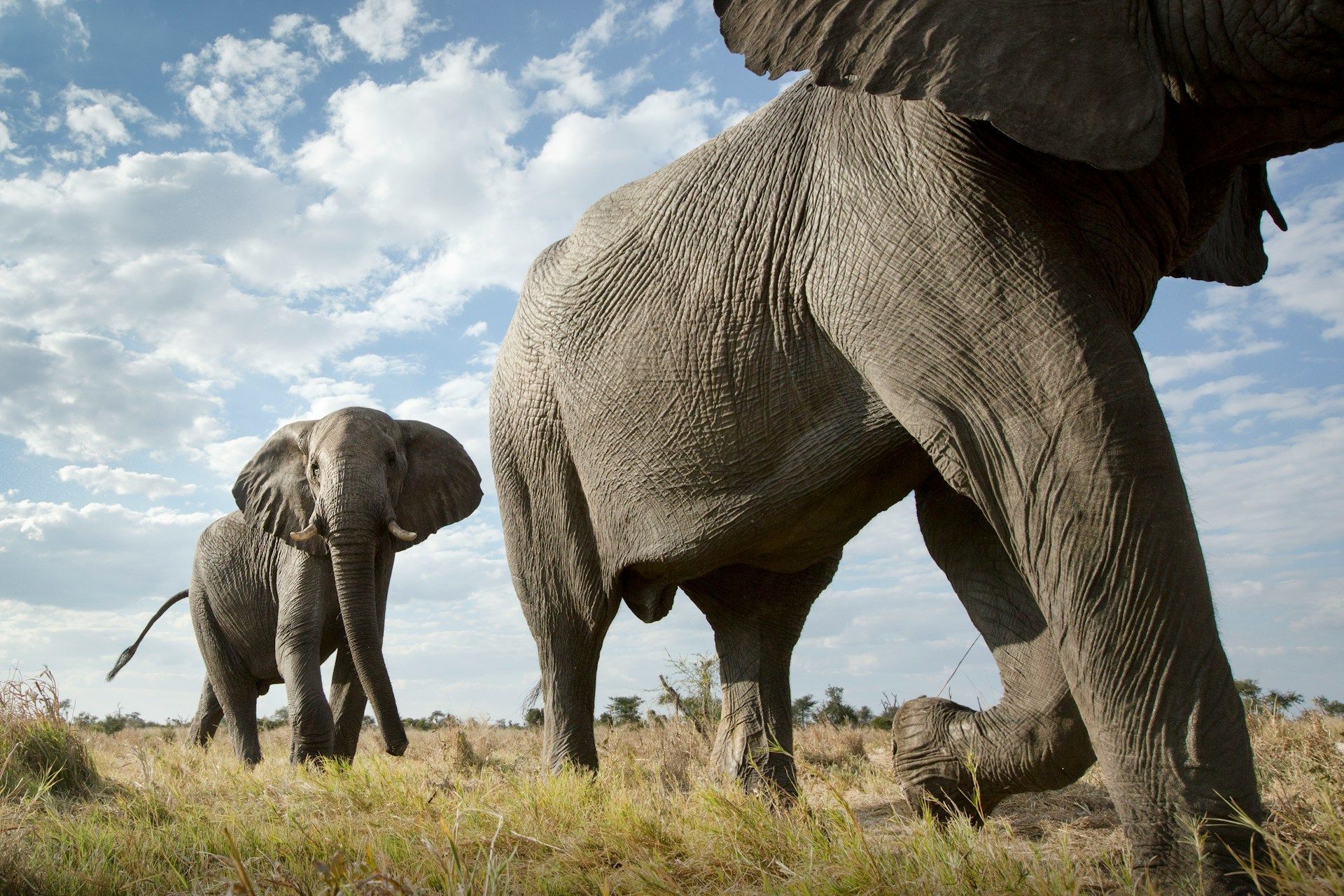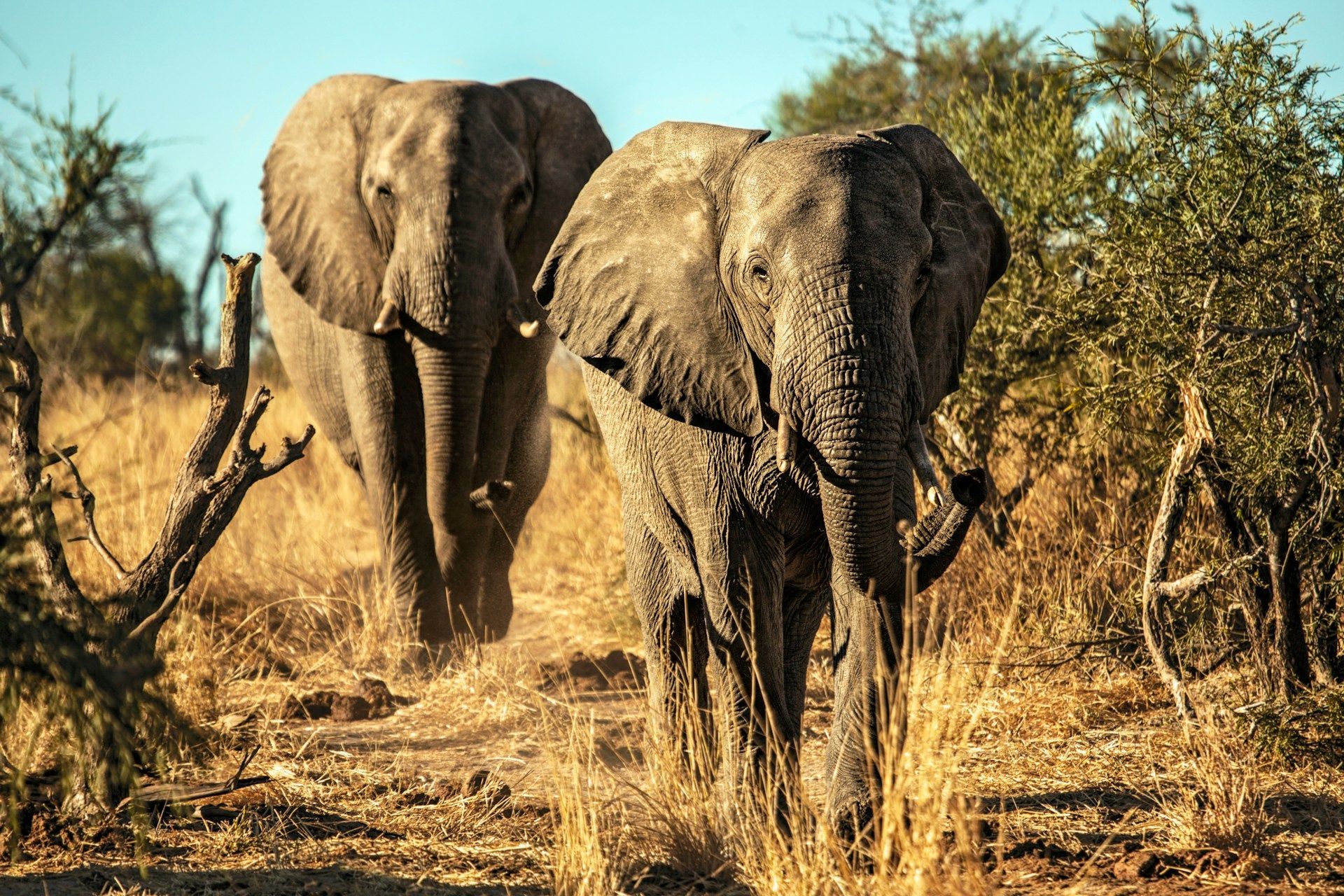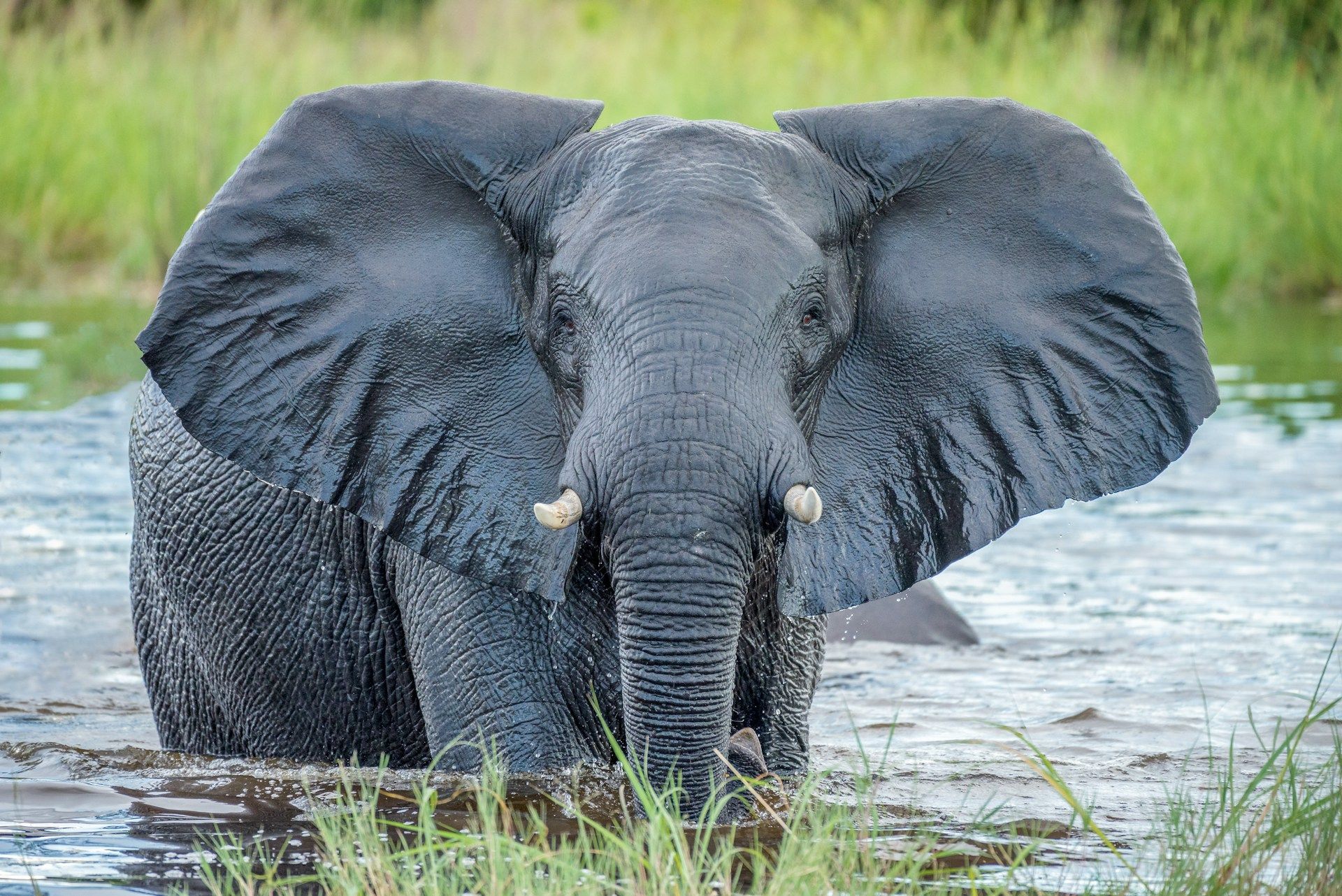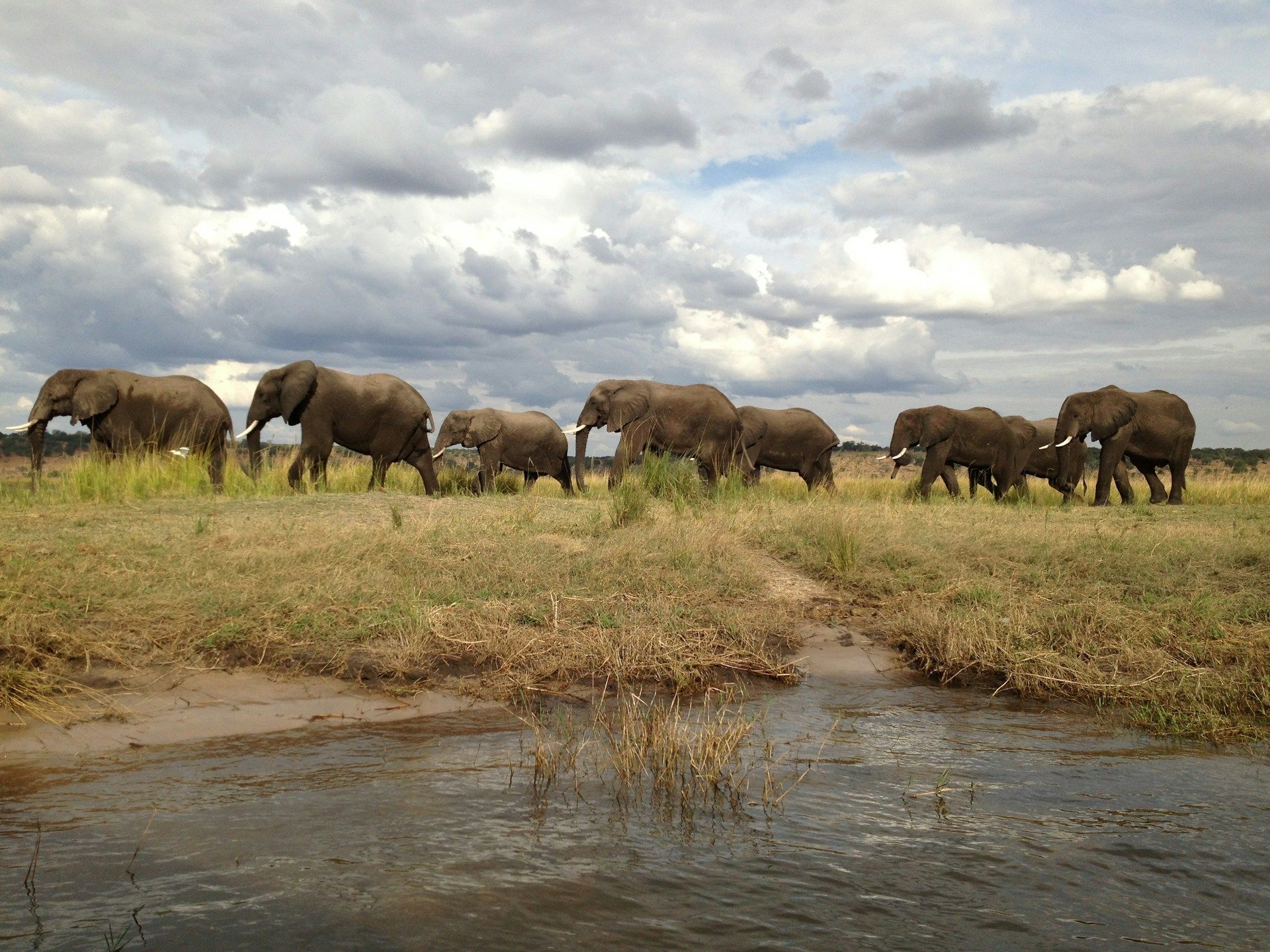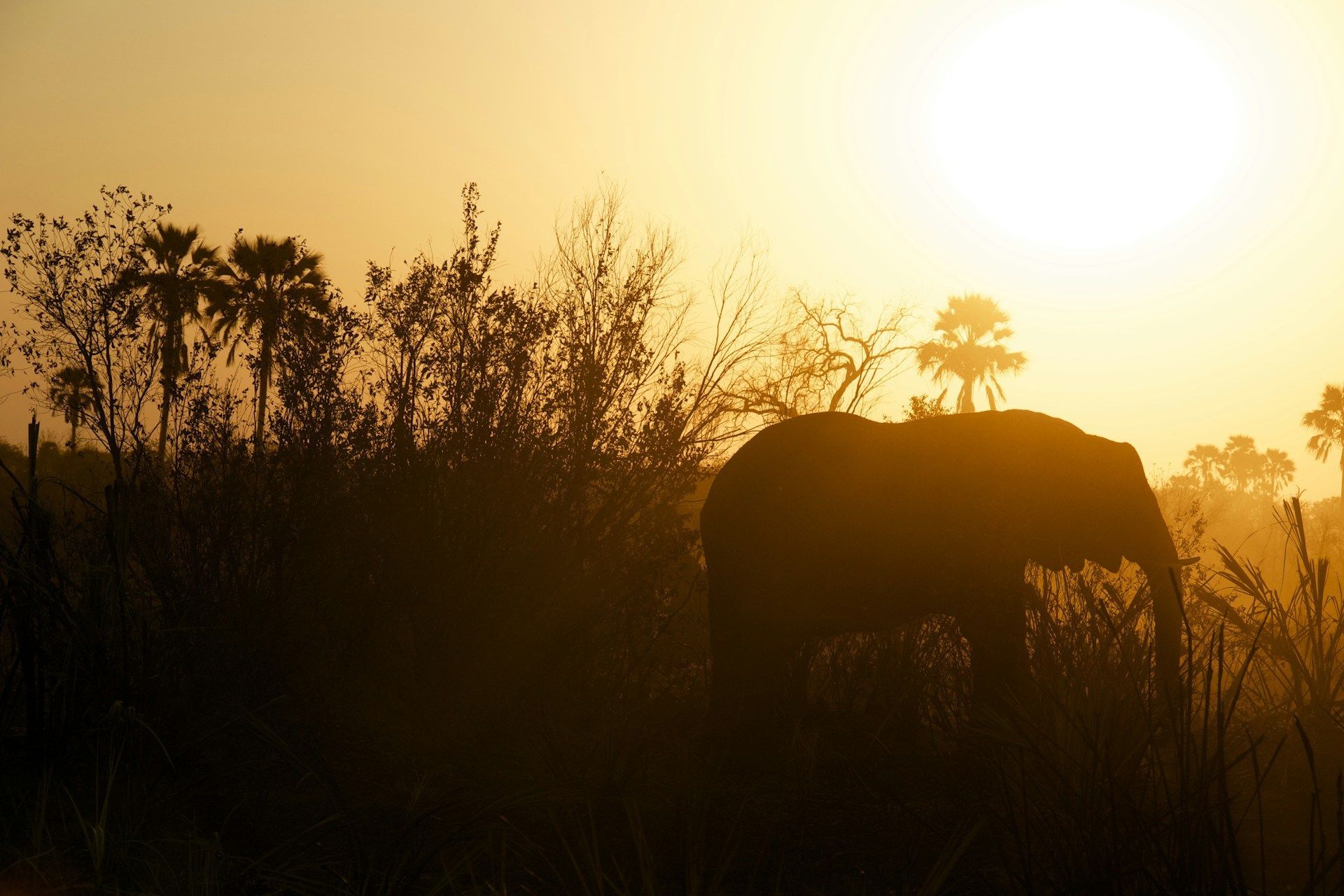Elephants - our wilderness architects
These gentle giants are important landscape managers!
In the quiet wild places of Botswana, elephants shape the land in ways few other creatures can. They are not simply visitors here. In the Okavango Delta and the far reaches of the Kalahari, they are architects of the wilderness itself. Their size and presence alter the earth, the waterways, the very air. To watch them move slowly through the mopane woodland or wade chest-deep in the Delta’s floodplains is to witness life unfolding as it has for thousands of years.
It is impossible to separate elephants from these landscapes. Their footprints press deep into the soil, their tusks scrape at bark and strip leaves, their trunks break branches that fall and rot and nourish the ground. As they feed, they change the structure of the vegetation, opening pathways, clearing dense thickets, creating space for sunlight to reach the forest floor. These clearings become home to insects, birds, antelope. Lions follow, and leopards too, slipping silently along elephant-made trails. The life of the land depends on this quiet work.
In the Delta, where seasonal floods arrive from far-off Angola, elephants play an essential role in shaping the flow of water. As they cross channels and dig for hidden springs, they help to keep water moving. Their movements open new routes, prevent old ones from closing and ensure that the floodplains do not dry out or become choked with reed beds. Without elephants gently managing the land in this way, large parts of the Delta and the Khwai region around Feline Fields Vintage Camp would shift toward swamp and dense woodland, reducing the variety of life these places can hold.
They are gardeners as well as engineers. Elephants feed on fruits and nuts that few other animals can reach. As they walk, they carry seeds in their bellies, depositing them far from the parent trees in rich dung that nourishes the growing seedlings. This simple act spreads life across huge distances. Trees like the baobab, marula and sycamore fig owe their wide range to the wandering habits of these gentle giants.
At Feline Fields Lodge in the Kalahari, where water is scarce and the land naturally dry, elephants dig into the sand, reaching for moisture below the surface. In doing so they can create waterholes that other animals depend on. These small acts of survival become gifts to the whole ecosystem. Animals of every kind gather to drink from these wells in the sand. Once again, the elephant’s presence changes everything.
They move between these regions with the seasons, walking old paths known to their herds for generations. From the northern rivers of Chobe and Linyanti to the southern edges of the Delta and the fringes of the Kalahari, their migrations connect the land. As they travel, they carry seeds, disturb the soil, spread nutrients. They remind us that no part of this wilderness stands alone.
Of course, their numbers shape the land too. In places where herds are large and food is plentiful, elephants can thin the woodland, breaking more trees than the forest can regrow. This may seem destructive, but it brings balance of a different kind. Where trees fall, grasslands grow. Where grasslands stretch wide, grazing herds appear – zebras, wildebeest, impala. And where these gather, predators follow. The entire web of life shifts around the elephant’s needs.
Yet this relationship is fragile. In a world of fences, roads and fields, elephants can find their paths blocked. They follow ancient routes to water or salt pans and come face to face with human settlements. Conflict can follow – a broken fence, a raided crop, a frightened farmer. In places like Khwai, careful work is being done to ease this tension. Community tourism brings income and pride in wildness. Tracking teams and early warning systems help people avoid unexpected meetings with wandering bulls. Small things make a difference.
At Feline Fields Vintage Camp, you may meet an elephant in the golden light of morning, standing quietly at the water’s edge. He lifts his head, turns an ear to the breeze, watches you with calm, ancient eyes. In that moment you understand his role here. Not as an animal on display, but as a keeper of this wild space, a force that keeps the bush open, the water flowing, the life around him in balance.
Even the Kalahari feels his touch. As elephants return to the drier landscape around Feline Fields Lodge, they bring change. New paths are pressed into the sand, new trees spread, old waterholes are rediscovered. Their presence hints at old patterns and new possibilities – that this land can be open and whole again, if only given the space.
Their story and the story of the land are the same. To keep elephants safe is to keep the wilderness alive. Not for the photographs or the wonder of visitors alone, but because without them these ecosystems would slowly change, closing in, losing richness, losing breath. The Delta would thicken. The Kalahari would harden. The herds and hunters that depend on open spaces and scattered woodland would fade.
But with elephants moving freely, the rhythm holds. The waters shift. The grass grows. The trees rise and fall and rise again. Life circles on, simple and perfect.
It is this truth that stays with you, long after you have left the wild. The elephants do not belong to the land – the land belongs to them.

